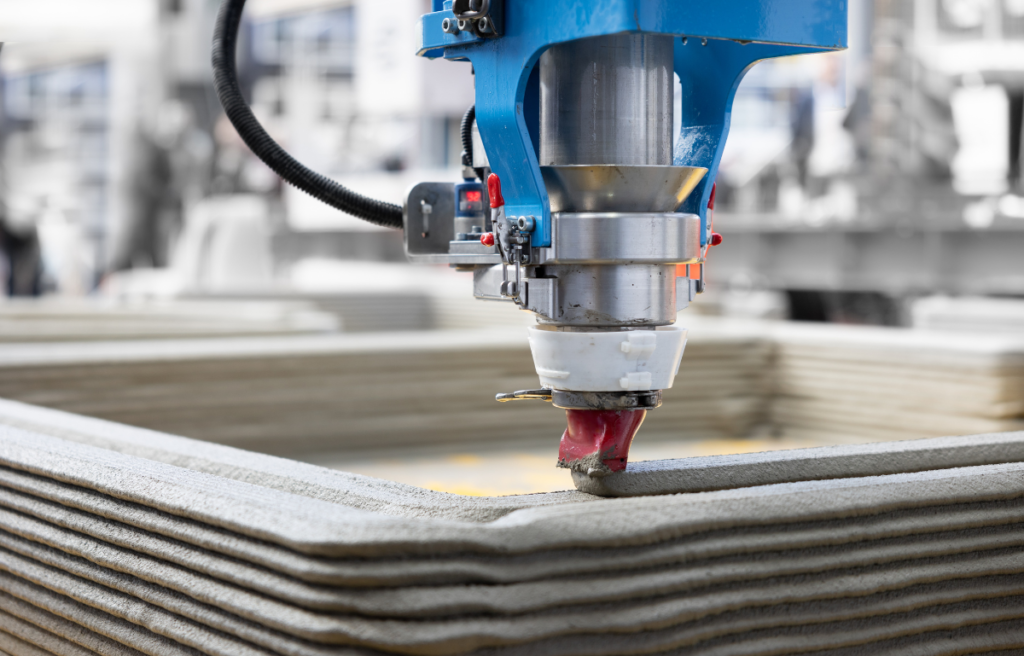3D printing has revolutionized various industries, from healthcare to automotive, by offering fast prototyping, cost efficiency, and customization possibilities. For enthusiasts and professionals seeking in-depth insights into this rapidly advancing technology, the 3D659.com blog serves as a beacon of innovation. In this blog, we’ll explore how three dimentional printing continues to redefine custom manufacturing, the emerging technologies shaping its future, and the impact of these innovations on industries and consumers alike.
What is 3D Printing?
3D printing, also known as additive manufacturing, is a technology that creates physical objects from digital models. Using various materials like plastic, metal, and resin, three dimentional printers build items layer by layer based on precise digital designs. This technique has evolved significantly since its inception in the 1980s, moving beyond rapid prototyping to become an essential tool for custom manufacturing.
How Does It Work?
- CAD Design: The process starts with creating a digital model using CAD (Computer-Aided Design) software.
- Slicing: The model is then sliced into hundreds or thousands of horizontal layers.
- Printing: The 3D printer reads the slice data, printing each layer to create a three dimentional object.
- Post-processing: The printed item may require curing, sanding, or polishing to achieve the desired finish.
Benefits of 3D Printing in Modern Manufacturing
Three dimentional printing is reshaping industries by providing unique advantages over traditional manufacturing methods. Let’s explore some of the benefits:
1. Rapid Prototyping
One of the most impactful advantages of 3D printing is the ability to quickly create prototypes. Engineers and designers can now experiment with different versions of a product without incurring significant time delays or expenses.
- Example: In the automotive sector, manufacturers like Tesla are using three dimentional printing to test different component designs, allowing faster iteration cycles and quicker improvements.
2. Cost-Effectiveness
Traditional manufacturing processes like injection molding require expensive tooling and molds. In contrast, three dimentional can produce items without needing these components, significantly reducing costs.
- Small Batch Production: For small production runs, three dimentional printing is often more economical than traditional manufacturing, as there’s no need for costly setup.
3. Customization and Personalization
Customization is a major strength of three dimentional printing. Since each item is built from scratch, adjustments can be made easily to cater to individual needs.
- Healthcare Applications: Prosthetic limbs and dental implants are now custom-built to fit patients perfectly, improving comfort and functionality.
4. Reduced Waste
Additive manufacturing only uses the amount of material required to create an object, unlike subtractive methods that cut away excess material. This leads to a more sustainable approach with minimal waste.
Innovations in 3D Printing: Shaping the Future
The field of 3D printing is constantly evolving, and innovations are making it more accessible and versatile. Here are some recent advancements:
1. Multi-Material and Color Printing
Modern three dimentional printers are capable of printing with multiple materials and colors simultaneously. This opens up possibilities for creating complex structures with varied properties.
- Example: Printers like the Stratasys J850 allow designers to create models that combine soft and rigid materials, ideal for creating realistic prototypes of consumer products.
2. Metal 3D Printing
Initially, three dimentional printing was limited to plastics and polymers, but the introduction of metal three dimentional printing has been a game-changer for industries such as aerospace and healthcare.
- Aerospace Industry: Companies like SpaceX and Boeing are now printing metal parts for rockets and aircraft, reducing weight and increasing efficiency.
3. Bioprinting and Healthcare Breakthroughs
Bioprinting uses three dimentional printing technology to create tissue and organ structures, potentially revolutionizing the healthcare sector.
- Organ and Tissue Regeneration: Researchers are developing techniques to 3D print tissues that could be used for organ regeneration, paving the way for custom-made organ transplants in the future.
4. Large-Scale three dimentional Printing
Large-scale 3D printing is gaining traction, especially in the construction industry. 3D-printed houses are becoming a reality, offering affordable housing solutions in a shorter time frame.
- Case Study: In the Netherlands, a company called “Project Milestone” has successfully 3D-printed residential buildings, significantly reducing labor costs and time required for construction.

Applications of 3D Printing Across Industries
3D printing has found applications across a wide array of industries, from healthcare to fashion. Below, we discuss some of the most impactful applications:
1. Healthcare and Medicine
- Prosthetics and Orthotics: Custom-made prosthetics are now being 3D printed, providing a perfect fit for patients and enhancing their comfort and mobility.
- Surgical Planning: Surgeons use 3D-printed models of organs to plan complex surgeries, improving outcomes and reducing operating times.
2. Aerospace and Automotive
- Lightweight Components: Aerospace and automotive industries leverage 3D printing to create lightweight parts, which helps reduce fuel consumption.
- On-Demand Spare Parts: Manufacturers can print replacement parts on demand, reducing the need for large inventories and long lead times.
3. Consumer Products and Fashion
- Customized Footwear: Leading footwear brands are now offering 3D-printed shoes tailored to individual foot shapes, ensuring maximum comfort.
- Jewelry and Accessories: Designers are using 3D printing to create intricate jewelry that would be challenging to produce through traditional methods.
4. Education and Research
- Interactive Learning: 3D printing is being used in classrooms to create interactive models, such as anatomical figures or historical artifacts, enhancing the learning experience for students.
- Research Prototyping: Universities and research institutions are employing 3D printers to develop prototypes for experiments, allowing them to test ideas quickly and affordably.
Challenges Facing 3D Printing Technology
Despite its many advantages, three dimentional printing does face certain challenges that need to be addressed for broader adoption:
1. Limited Material Availability
While advancements are being made, the variety of materials available for 3D printing remains limited compared to traditional manufacturing.
- Material Research: Significant research is needed to develop new materials that offer enhanced strength, flexibility, and temperature resistance.
2. High Initial Costs
Although the cost of three dimentional printing is decreasing, high-end printers and materials still represent a significant investment, making them less accessible to small businesses and individual users.
3. Speed Limitations
While 3D printing is ideal for prototyping and small production runs, printing large objects or large quantities can still take a considerable amount of time compared to traditional methods.
4. Skill and Training Requirements
Operating a three dimentional printer and designing CAD models require specialized skills. Widespread adoption will depend on educational initiatives to train professionals in 3D printing technologies.
The Future of 3D Printing: Trends to Watch
As three dimentional printing technology continues to evolve, several trends are expected to shape its future:
1. AI Integration
Artificial Intelligence is set to play a key role in 3D printing by optimizing designs, predicting potential flaws, and improving the efficiency of the printing process.
2. Sustainability Focus
The emphasis on sustainability will drive the development of biodegradable printing materials and processes that further reduce waste.
3. Decentralized Manufacturing
Three dimentional printing has the potential to decentralize manufacturing, enabling local production and reducing the need for global supply chains, thus minimizing transportation costs and carbon emissions.
4. Expansion in the Food Industry
Food three dimentional printing is an emerging trend, with machines capable of printing customized food items. This has significant potential for the food service industry, including personalized nutrition solutions.
3D printing is undeniably one of the most transformative technologies of our time, with applications that span across industries and hold the promise of reshaping how we design, manufacture, and consume products. From rapid prototyping to custom manufacturing, 3D printing offers immense potential for innovation, efficiency, and sustainability.
While there are challenges to overcome, the future of 3D printing looks bright, with advancements in material science, bioprinting, and artificial intelligence driving the next wave of innovation. By embracing these advancements, industries and individuals can benefit from a more versatile, cost-effective, and customizable approach to manufacturing.
The 3D659.com blog continues to be a valuable resource for staying informed about the latest trends, technologies, and applications in 3D printing. As we look to the future, the possibilities for three dimentional printing seem almost limitless, promising a new era of customization and innovation in manufacturing.












